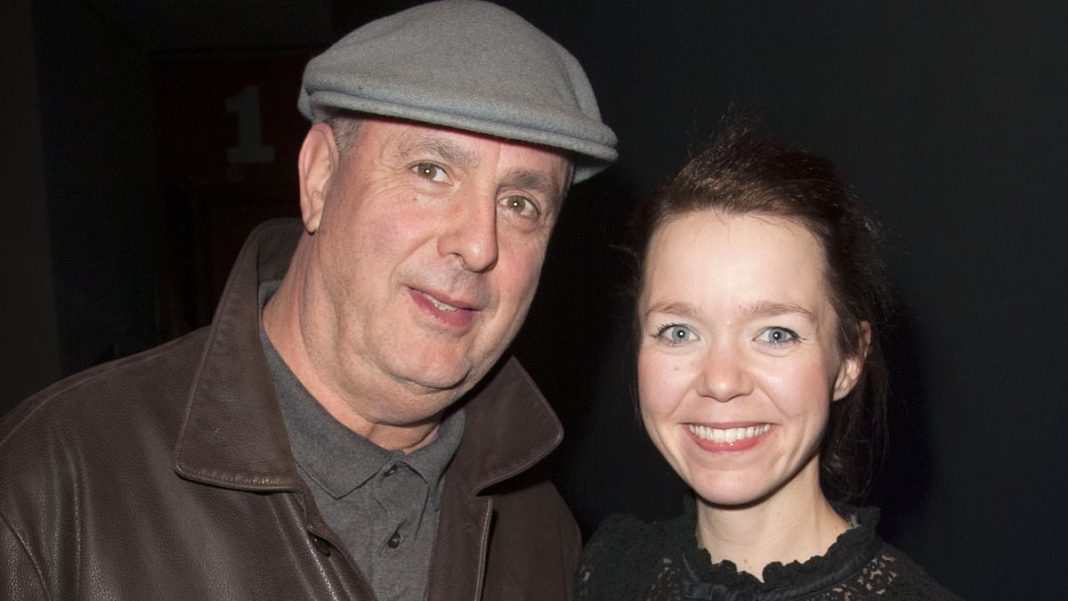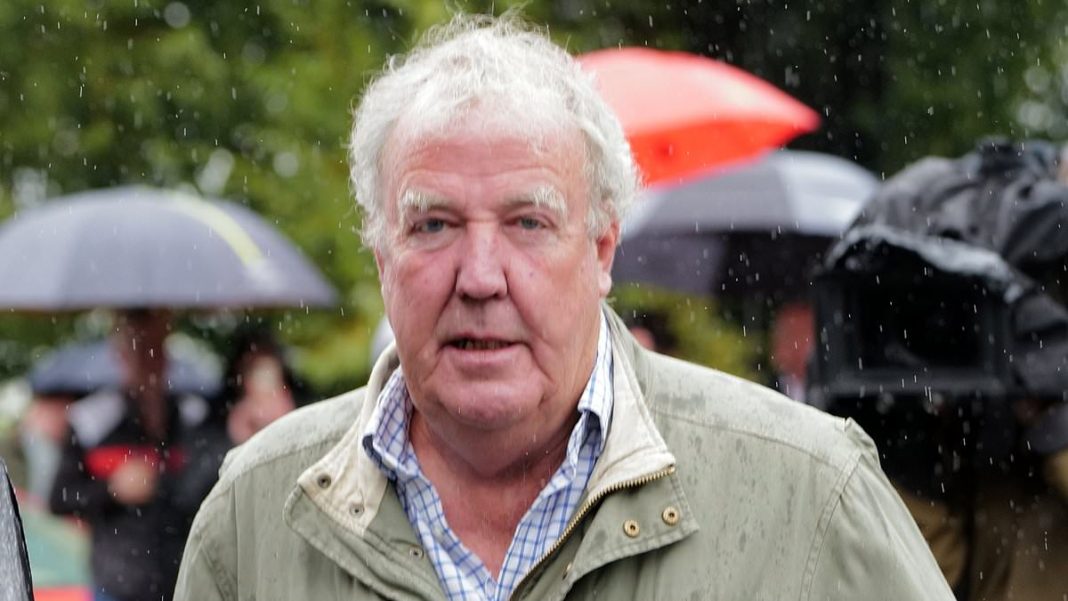They’re the kind of light-hearted shows that make for perfect family viewing, where the most controversial moment is nothing worse than some mild swearing when someone gets a question wrong, or a contestant wearing a sexy outfit.
However, there can be an occasional sinister side to TV gameshows.
While the vast majority of contestants are in it for a bit of fun and the chance to win a prize, a handful of hopefuls are hiding extrememly dark secrets, such as Rodney Alcala who appeared on The Dating Game, a US version of Blind Date, in 1978 in the midst of a murder spree.
His story is the subject of a gripping new Netflix film, Woman Of The Hour, directed by and starring Anna Kendrick, and has highlighted the strange compulsion that makes killers seek the limelight on TV – despite the risk of their crimes being exposed.
Welsh serial killer John Cooper appeared on the TV darts contest Bullseye in 1989 and his bragging on the show about his knowledge of the coastline where bodies of his victims were found was a key piece of evidence used to convict him.
Criminal Psychiatrist Dr Sohom Das told MailOnline that killers are drawn to gameshows because of their ‘inherent narcissistic tendencies’ or even as the opportunity to ‘feel normal’.
‘In my professional opinion, from my career working with violent offenders with a range of mental disorders, I think that definitely is an overlap between the psychology of serial killers and people who seek the limelight, such as appearing on TV game shows,’ he said.
‘Of course, some people simply go on game shows for the surreal experience, for a bit of fun or for the opportunity to meet a celebrity or two. Basically, to gain an interesting story to tell at the pub.
‘But other people have a strong desire to appear on game shows due to their inherent narcissistic tendencies. Narcissistic individuals have an inflated sense of self-importance and a need for admiration, so they might literally put themselves on TV as a platform to be adored (in their egotistical mummy-didn’t-cuddle-me-enough minds).
‘Appearing on these shows could have provided these killers with an opportunity to showcase their perceived talents, charm and intelligence – specifically, in the form of memorising cuddly toys on a conveyor belt.
‘It is also possible that these individuals saw appearing on a game show as an opportunity to experience a sense of normalcy and excitement. For someone who leads a solitary and often troubled life, the prospect of being on television could have been appealing.’
‘It’s as a stark reminder that appearances can be deceiving. It is crucial to remember that even the most seemingly ordinary individuals, standing behind the podium with their inane smiles and apparently fascinating facts about their day jobs, can actually harbour some very dark secrets.’
Rodney Alcala
Rodney Alcala seemed like the perfect contestant when he appeared on The Dating Game in 1978, but in reality the self-styled playboy was in the midst of a murder spree and was a predator so ruthless that one of Los Angeles’s top detectives has called him the ‘most evil, cunning and remorseless killer’ he had ever come across.
Born in Texas in 1943, he had joined the US army at 17 but was given an honourable discharge after being diagnosed with an antisocial personality disorder.
At the age of 25, he abducted an eight-year-old girl on Sunset Strip as she walked to school, who only survived thanks to suspicious motorist who saw the girl get into a car and followed it before calling the police.
When officers arrived at Alcala’s apartment, he answered the door naked. He then said he would get dressed but fled out the back.
Police found his victim, who had been beaten with a steel bar, in a pool of blood and fighting for her life.
Now on the FBI’s Most Wanted list, Alcala next turned up in New York, reinventing himself as a man called John Berger, and becoming a student at New York University film school and a photographer as a way of meeting young women.
But after two young female students spotted his face on an FBI poster in 1971 at a post office, he was finally arrested.
The parents of the eight-year-old girl, who had been in a coma for a month after the attack, refused to put her through the ordeal of giving evidence and police were forced to make a plea deal, allowing Alcala to testify to a lesser charge of child molestation.
After only 34 months in custody, Alcala was paroled in 1974 and back out on the streets.
Within weeks he’d approached a 13-year-old schoolgirl at a bus stop in Huntington Beach, California, and persuaded her to go to a beach, where he planned to attack her. However, a park ranger spotted them and Alcala was arrested.
Returned to prison, he was again released on parole in 1977 and just a year later he was charming Cheryl Bradshaw, an aspiring actress who had to choose from three suitors on The Dating Game.
Alcala was ‘Bachelor Number One’ and flirted with contestant Cheryl Bradshaw, saying suggestively that his ‘best time is at night’, words that now come with chilling connotations.
When the 35-year-old was declared the winner, he was introduced to his date as a ‘successful photographer’ who enjoyed skydiving and motorcycling in his spare time.
Producers who selected him for the show had failed to undertake background checks, where they would have seen he was a convicted rapist who had only been released from prison the year before.
Worse still, by 1978 Alcala – whose appearance on The Dating Game can still be seen in old clips on YouTube – had already killed at least two women in Los Angeles and two in New York.
A teenager he picked up in February 1979 survived her attack, leading to his arrest. But after his mother paid to bail him out, he went on to kill Jill Parenteau, 21, in June 1979.
Twelve-year-old Robin Samsoe was murdered six days later after disappearing while riding her bike to a ballet lesson and Alcala was arrested.
The investigation uncovered earrings identified as belonging to the dead schoolgirl in a locker he had rented in Seattle, along with other jewellery, trophies of further crimes, and more than 1,000 sexually explicit photos of women and girls.
In 1980 Alcala was convicted and sentenced to death for Robin’s murder, but twice his convictions were overturned on technicalities, though he remained in custody.
His third prosecution took place in 2010, for Robin’s murder as well as the killings of four other women: Jill Barcomb, 18, murdered in 1977; Georgia Wixted, 27, murdered in 1977; Charlotte Lamb, 31, murdered in 1978 and Jill. He was found guilty of all of them and sentenced to death.
Further prosecutions followed and in 2013 Alcala pleaded guilty to the 1971 murder of Cornelia Crilley, a 23-year-old TWA flight attendant who was killed in her apartment in New York.
The sadistic killer also admitted the murder of 23-year-old nightclub heiress Ellen Hover.
In 2016, thanks to advances in forensic science prosecutors in Wyoming charged Alcala with the murder of 28-year-old Christine Thornton, who disappeared in 1977 and whose body was found in 1982.
Although his true death toll remains unknown, the authorities estimate he could have killed up to 130 people.
In July 2021, still awaiting execution on Death Row, Alcala died from natural causes aged 77.
The horrific story of how a serial killer managed to pose as an eligible bachelor on prime-time TV and get away with assaulting and killing young girls and women for years is the subject of a gripping new Netflix film, Woman Of The Hour, directed by and starring Anna Kendrick.
Francois Vérove
Police were hunting Francois Vérove for 35 years, when he appeared on a popular television show in France.
The married former officer of the cavalry regiment of the Republican Guard managed to stay free for years, despite being linked to nine murders and 30 case of rape and abuse.
He even evaded capture after appearing on show Everyone Wants to Take Their Place in 2019, where he talked about how he ‘kept walkers safe’ in Paris park, Bois de Boulogne.
But in 2021, the police began to close in on him following the discovery of his DNA at several crime scenes linked to the murderer known as Le Grêlé, meaning the pockmarked man.
Vérove died by suicide, leaving a letter where he confessed to killing people following a ‘mad rage’ that had ‘turned me into a criminal’, but claimed he had since ‘got himself together’.
Among the horrific crimes his DNA matched was the rape and murder of 11-year-old Cécile Bloch in 1986.
His DNA also matched the murder of a couple in Paris in 1987 and 19-year-old Karine Leroi, 19, in 1994, as well as a crime scene were five children were raped.
It is thought he could be linked to even more murders and assaults, with police still investigating the extent of his crimes.
John Cooper: Bullseye
Serial killer John Cooper’s appearance on a gameshow ended up being one of the pieces of evidence used against him.
The now 80-year-old is currently in prison serving a whole life order, after being convicted of four murders as well as the rape of a 16-year-old girl and sexual assault on a 15-year-old girl.
A diagnosed psychopath, Cooper was a prolific thief before he turned killer, with his first known victims siblings Richard and Helen Thomas being found murdered from shotgun wounds at their home in December 1985 – killed in an ‘execution style’.
He then shot Peter and Gwenda Dixon in the face with a sawn-off shotgun as they enjoyed a coastal walk on the final day of their Welsh summer holiday on the Pembrokeshire coast, in June 1989.
He was sentenced to fourteen years in 1998 for robbery and burglary, enabling the police to collect further evidence against him.
But the breakthrough didn’t come until 2009, when archive footage of Cooper on the dart-based quiz show, Bullseye, was obtained.
On the popular ITV show, hosted by Jim Bowen, the murderer bragged about his extensive geographical knowledge of the Pembrokeshire coastline upon which the Dixons were later killed.
The unearthed footage of Cooper on Bullseye also showed him looking remarkably similar to a police sketch of the killer from a witness’ description following the Dixons’ deaths.
Officers managed to freeze a frame of him standing in the exact same position as an artist’s impression of the wanted killer sketched at the time of the original investigation.
Cooper had been released from prison on parole in January 2009, but was arrested again four months later for the double murders, a serious sexual assault and five attempted robberies in Milford Haven in 1996.
Detectives were able to nail Cooper for the murders through both the Bullseye footage and advancements in DNA testing.
For the brutality of his crimes, he was given a whole life order, meaning he will remain incarcerated until his death, with John Griffith Williams saying ‘the murders were of such evil wickedness that the mandatory sentence of life will mean just that.’
The nicknamed ‘Bullseye Killer’ is also suspected as the culprit in one of Wales’ most notorious unsolved murders, the shooting of Harry and Megan Tooze in 1993 and the unexplained 1989 death of widow Flo Evans, 72, found fully clothed in her bath just two miles from Cooper’s home.
While it has also been suggested Cooper is to blame for the deaths of siblings Griff and Patti Thomas in Pembrokshire in 1976, with detectives beginning a forensic review into the killings in October 2022.
He was profiled in the award-winning TV drama The Pembrokeshire Murders, where he was played by Keith Allen, which told how he carried out four cold-blooded murders and how he was caught.
Lori Vallow: Wheel of Fortune
Lori Vallow’s crimes shocked the nation after the bodies of two of her children, Tylee and JJ, were found buried in her husband Chad Daybell’s yard in June 2020.
She murdered her children after her religion led her to believe she would play an important role in a looming apocalypse, during which only 144,000 ‘chosen’ souls would survive.
She believed her own children, JJ, seven, and Tylee, 16, were not among the ‘chosen’, and were instead ‘zombies’ possessed by evil spirits and was sentenced to life in prison.
Her story was made into a Netflix true crime documentary, Sins Of Our Mother.
But almost two decades earlier, Lori had featured on TV for entirely different reasons.
Almost two decades earlier, she was a hairstylist in her late 20s living a normal life as a mother-of-two and decided to add some excitement to her life with an appearance on the popular game show Wheel of Fortune.
Chilling footage of the appearance, saw a cheerful looking Vallow telling host Pat Sajak: ‘I have a wonderful husband at home, Joseph, who is watching our two beautiful children, Colby, who is seven, and Tylee, who is one.’
‘We like to play all kinds of sports on our three acres,’ she added, to which Sajak remarked ‘it sounds like you have a nice life.’
While taking part on the long-running game show, Vallow wore a tight pink sweater as she gleefully played along in the money-making game.
The future-murder suspect found quick success on the show, winning several thousand dollars after correctly guessing the ‘classic TV’ genre segment.
After joking she’d take a risky play during the game because she ‘has no money’, the beauty queen was the episode’s winner, scooping an impressive $17,500.
That same year, Vallow made a bizarre statement while attempting to impress judges during the Mrs Texas pageant.
Wearing her sash noting her as the reigning Mrs Hays County winner, Vallow was asked: ‘Tell us who you are, what makes you tick?’
‘Being a good mom is very important to me,’ she said. ‘And a good wife, and a good worker.’
But her heartwarming description of her family life was ominously followed by a strange moment, where she admitted that ‘Being all those things together is not easy…So, I’m basically a ticking timebomb.’
Months after her appearance on Wheel of Fortune, she split from her husband Joseph and went on to meet and marry Charles Vallow – her third husband.
They were together for four years and adopted Charles’ grand-nephew JJ because his parents were unable to care for him.
The couple split in 2019, with Vallow citing her exreme religious beliefs as the reason for the divorce.
In 2018, Lori met author and ‘doomsday prophet’ Chad Daybell and they married the following year.
She is also accused of the alleged murder of her fourth husband, Charles Vallow, who was shot in July 2019 and the attempted murder of her niece’s ex-husband, Brandon Boudreaux in October 2019.
This week court documents revealed Vallow has requested to waive her right to legal counsel and represent herself in the upcoming Arizona trial.
Last year, a psychiatric assessment revealed that she suffers from a ‘delusional disorder’ and an ‘unspecified personality disorder’ with narcissistic features.
Daybell, a known apocalyptic and Mormon-faith based author, was trialed separately and also found guilty of all charged in May, with him being sentenced to death on June 1.
Edward Wayne Edwards: To Tell the Truth
Unlike other gameshow killers whose dark sides were unknown to producers, Edward Wayne Edwards was known to have committed crimes when he appeared on an episode of the game show To Tell the Truth in 1972.
The American serial killer had been on the FBI’s Most Wanted List after spending almost a decade robbing gas stations in the 1950s and 1960s.
He ended up spending five years in prison, but when he was paroled in 1967, he claimed to have reformed.
He went on to write a bestselling book, Metamorphosis of a Criminal, about turning his life around, and even became a motivational speaker.
Soon after, he got married and had children, with his family growing up thinking his life of crime was far behind him.
Edwards appeared on panel show What’s My Line?, which saw celebrities try to guess contestants’ occupations.
While on To Tell the Truth, the celebrity panel were tasked with figuring out which of three contestants had once been a convicted felon.
One celebrity guessed correctly that he was the criminal, because on face value he seemed the most unlikely candidate.
‘You’d trust him with your life,’ he explained.
However, a few years after appearing on the gameshows, Edwards turned back to a life of crime and it was eventually convicted of murdering five people. The actual death toll is estimated as up to 15 victims.
His eldest daughter April Balascio ended up being the one to turn her father in, after doing research on a 1980 double murder, known as the Sweetheart Murders in 2009.
The double murder involved Tim Hack and Kelly Drew, a couple who went missing after leaving a wedding reception at Concord House.
Tim had been stabbed in the back and chest, while Kelly had been strangled and sexually assaulted.
April discovered that her dad had worked as a handyman at the wedding venue.
She called local police, who were able to connect her father to the crime using DNA and arrest him.
Once in custody, Edwards not only confessed to the sweetheart murders, but to being behind three other murders too.
Edwards admitted to fatally shooting Billy Lovano, 21, and Judy Straub, 18, in a Norton, Ohio Park in 1977.
Edwards also admitted to the 1996 murder of his adopted son Dannie Boy Edwards, a soldier in the Army.
He said he took the 25-year-old, who he adopted as an adult in his early 20s, to some woods in Troy, Ohio and shot him twice at point blank range in order to collect on the young man’s $250,000 life insurance plan.
The victim’s body was found about four months later in a shallow grave just a mile from the Edwards family home.
Edwards was sentenced to two life sentences for the two double murders, and was given the death sentence for killing his adopted son.
In April 2011, a month after he was given the death sentence, Edwards died of complications due to diabetes while jailed in Columbus, Ohio.
Paul Curry: Jeapordy!
Paul Curry won big on Jeopardy! back in 1989, just five years before he murdered his wife Linda Kinkade.
After appearing on three episodes of the long-running quiz show, he bagged a whopping $24,101.
He went on to tie the knot with Linda – who was 13 years older than him – in Las Vegas in 1992, after meeting while working at the same California nuclear power plant.
However, Curry soon began pressuring her to put his name on all their finances and wanted to take out a $1million life insurance policy on her, while insisting she didn’t need one for him.
Linda later discovered he had a child and had been married twice before, which he had never told her.
To smooth things over, Curry took Linda away on a cruise, but the passengers soon became infected by Hantavirus, eventually spreading to both Linda and then Curry.
However Linda’s health only got worse, with her spending weeks in hospital, with doctors unable to figure out what was making her so ill.
Eventually she recovered, despite having lost 25 pounds, and went home, where Curry lovingly took care of her. However, on New Year’s Eve in 1993, Linda fell ill once again and admitted herself to hospital.
Her best friend Merry Seabold became concerned after discovering paperwork about her finances and insurance policy and grew even more suspicious after a nurse at the hospital found a needle puncture in the tubing of Linda’s IV bag.
Police interviewed Linda to ask who may have wanted to poison her, to which she answered: ‘Well, the only person I can think of that would have a motive to do it would be Paul.
‘I just don’t want to believe and think that he would do that. He seems like a very good husband.’
After being released from the hospital, Linda continued to suffer vomiting and diarrhea, with her friends warning her they suspected Curry was to blame.
One June 9, 1994, Curry wrote to Merry for help, saying Linda was wobbly and incoherent. The following day Linda died at the age of 49.
Despite suspicions by several friends and family members, there was no proof Linda had been poisoned and Curry was able to collect on her insurance.
He was able to get away with it until 2002, when a detective dug into his past and discovered his second wife had also been sick, saying she had ‘no energy, was very dizzy’ and despite seeing many doctors was never correctly diagnosed.
She had been sick over a year and like Linda, Curry also asked her to get life insurance, before leaving her for Linda.
The detective also found that Linda has tested positive for a toxic amount of Ambien and nicotine in her autopsy, despite not smoking and having 50 to 100 times more in her system than a regular smoker, while a small mark was visible behind her ear.
Authorities determined Linda had died from nicotine poisoning, theorising Curry had been putting tobacco into her salad dressing for a long period, before drugging her and injecting the fatal dose behind her ear.
He was eventually arrested and put on trial for her murder and insurance fraud in September 2014, two decades after he killed her.
Curry was found guilty of all charges, and received the maximum sentence of life in prison without parole.




